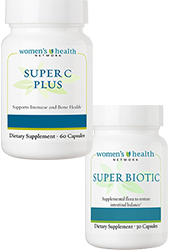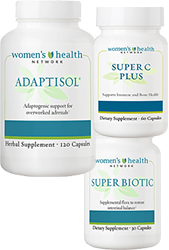To help slow the spread of coronavirus, the CDC recommends wearing a simple cloth face covering when social distancing is not possible.
Simple cloth masks do a good job at keeping in large respiratory droplets when you speak or cough. But when it comes to keeping out small particles you may be exposed to, these coverings are minimally effective. One study found that a typical face mask only keeps out about 10% of particles.

The good news? There are some easy hacks to help fix this. Here are three ways to boost your mask’s effectiveness.
1. Add a sheer nylon outer layer
Researchers at Northeastern University tested out 10 different kinds of cloth face masks and found that adding a nylon stocking outer layer increased the effectiveness of masks in keeping out small particles by up to 50 percent.
To try this method, cut a ring of material, about 8 to 10 inches top to bottom, from one leg of a pair of pantyhose. Put on your cloth mask and then pull the ring of nylon over your head and position so that it covers the mask. Give the top of the nylon a slight roll to hold it in place along the bridge of your nose and cheeks above the mask. The bottom of the nylon should drop down under your chin. (To get a visual, check out one of the researchers modeling how to position the nylon.)
Nylon is thought to be effective because it creates a tighter seal between the mask and the wearer’s face, boosting the mask’s ability to filter out small particles in the air. Researchers were inspired by scientists involved in the Three Mile Island nuclear disaster in the 1980s who used this same technique.
2. Double up your layers
Researchers from Wake Forest University tested the effectiveness of different types of homemade masks for blocking particles back in the spring when there was concern that hospitals might run out of supplies.
Their findings:
– The best-performing homemade masks were constructed of two layers of high-quality, heavyweight “quilter’s cotton” with a thread count of 180 or more.
– Batiks are a particularly effective type of fabric because they have a tight weave and thicker thread count.
– A double-layer mask with a simple cotton outer layer and an inner layer of flannel also performed well.

3. Put your mask to the “light test”
Is your homemade face mask too thin to really be very effective at filtering out particles? According to researchers, one way to test the effectiveness of a cotton cloth mask is to hold it up to a bright light. Is the light shining through so much that can you see the outline of the cloth’s fibers? This is a sign that a mask is too thin to be of much help in protecting you.
As Wake Forest researchers concluded in their own testing, single-layer cotton masks or double-layer designs of lower quality, lightweight cotton were generally found to be inferior at blocking incoming particles. [At the same time, please remember that even a thin mask can still block droplets from your coughs and sneezes, making it safer for others. If a thin mask is all you have — wear it! it makes a difference.]
However, if you want to give your mask a boost, double up the fabric to create a pocket between the layers. In this pocket, place a filtering material, such as a coffee filter or facial tissues, say researchers. Hold it up to the light again. If less light is passing through, it means you’ve boosted the mask’s particle blocking performance.
A few bonus tips? If your mask has ear loops that bother you or seem to hold the mask in the wrong position, look for masks with elastic bands that go over the back of the head. This allows for greater flexibility and comfort in positioning the mask. Do your glasses steam up when wearing a mask? This is a sign that your mask is not fitting tightly enough across the bridge of your nose and cheeks. A quick fix is to roll a piece of cloth into a tube and wedge it under the top of the mask to stop any “updraft” from leaking out when you exhale.
 |
COVID-19: More than the elderly are at risk. Maybe you are too. |
|
|
Shop for Immune Support |
|
Your Satisfaction Is 100% Guaranteed














